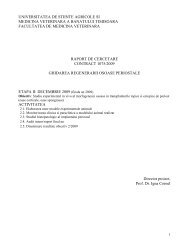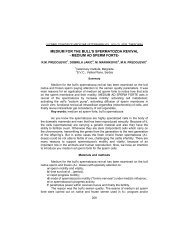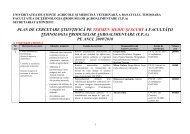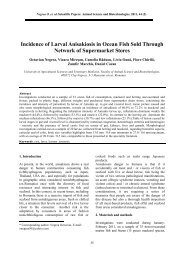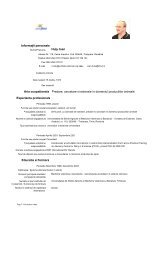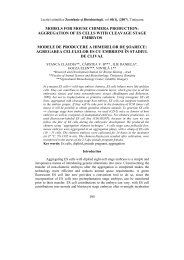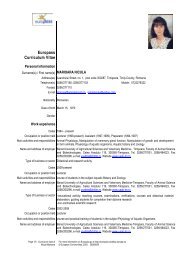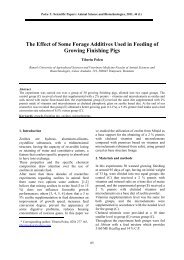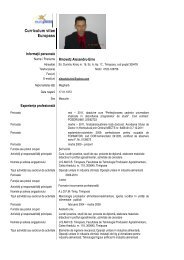journal of linguistic studies
journal of linguistic studies
journal of linguistic studies
Create successful ePaper yourself
Turn your PDF publications into a flip-book with our unique Google optimized e-Paper software.
(1) (B 9) INTERVIEWER: (interviewee introduction) After the victory <strong>of</strong> the<br />
Orange coalition in last year’s general election in Ukraine, Yulia Timochenko has<br />
become the country’s prime minister. Her first foreign visit was to Brussels,<br />
where she has held a series <strong>of</strong> meetings with European leaders. (headline) In our<br />
interview, Timochenko presents her view on the building <strong>of</strong> the Ukraine-EU<br />
relationship, how it is progressing, and how it is seen on both sides. (initial<br />
component) Prime minister, welcome to EuroNews. It’s your first overseas visit<br />
as Ukrainian prime minister. Does it symbolise your country’s desire to integrate<br />
in Europe?<br />
TIMOCHENKO: Absolutely, because the road to European integration has been<br />
one <strong>of</strong> our national priorities for a long time…<br />
As can be seen, the <strong>journal</strong>ist is introducing the interviewee in a very detailed<br />
fashion, thus creating the context for the headline which follows. The introduction is<br />
formal and factual, while the name and surname figure in the rheme position, achieving a<br />
deferred presentation <strong>of</strong> the interviewee. After the headline, which is summed up in a<br />
single sentence, an exchange <strong>of</strong> greetings ensues, accomplished through an adjacency pair<br />
welcoming – thanking. The <strong>journal</strong>ist did not allow the interviewee to complete the pair<br />
with the second part <strong>of</strong> the pattern and moved instead to the first topic cycle <strong>of</strong> the<br />
interview, accomplished through a separate sub-headline with the function <strong>of</strong> a<br />
preparation, i.e. a preface for the first question. The introduction <strong>of</strong> the interviewed<br />
politician defines her role as the representative <strong>of</strong> a political institution, whereas the<br />
possessive adjective (in our interview) and the reference to the name <strong>of</strong> the broadcasting<br />
company (which has been implicitly introduced in this way), position the <strong>journal</strong>ist as the<br />
representative <strong>of</strong> the news institution. After the context is provided, the grounds are set<br />
for the main part <strong>of</strong> the interview.<br />
The model is flexible in the sense that some <strong>of</strong> the moves can be omitted and that the<br />
ordering <strong>of</strong> elements is not necessarily fixed, although in most cases it is. The move<br />
interviewee introduction is the most frequent move and, directly or indirectly, it figures in<br />
every interview opening in the British data. However, the same cannot be said for the<br />
other two moves. Namely, the headline is found in half the examined openings, whereas<br />
the initial component is present in 63.6% <strong>of</strong> the cases.<br />
We shall now outline the form and the function <strong>of</strong> the obligatory moves identified in<br />
the rhetorical pattern.<br />
Interviewee introduction – In the British group <strong>of</strong> political interview openings, the<br />
interviewee introduction is the most significant move, which can be confirmed by the fact<br />
that the headline need not be announced after it. Most commonly it is accomplished<br />
directly (54.5%), by simply stating the name or the name and the function <strong>of</strong> the<br />
interviewee:<br />
(2) (B 1) INTERVIEWER: Ali Miraj is with me now…<br />
(3) (B 3) INTERVIEWER: … The Lib Dem’s acting leader, Vince Cable, joins<br />
us live from Westminster…<br />
If the interviewee is quite famous, then they are usually announced implicitly through<br />
vocatives addressing the function (Mr Secretary, Prime Minister, Mr President etc.) or<br />
their full name. What proves that we are dealing with implicit introductions is the fact<br />
that such vocatives addressing full names and functions are not used during the rest <strong>of</strong> the<br />
71



